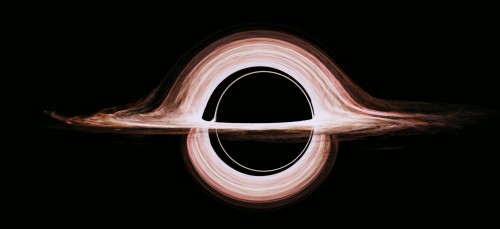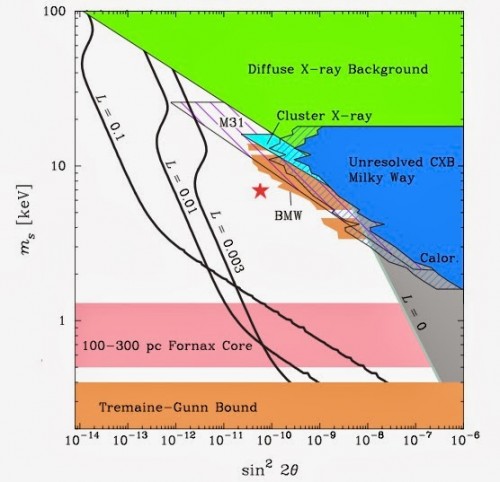Tag archives: astrophysics
The May 2015 issue of Physics World is now out
By Matin Durrani
A couple of years back, I had the pleasure of travelling 1100 metres below ground to visit a dark-matter laboratory at the bottom of the Boulby Mine on the north-east coast of England. The journey was certainly memorable – it involved plunging down in a rattling lift cage for several minutes with a group of miners setting off on their morning shift. Once in the lab – housed inside a souped-up set of trailers – I interviewed physicist Sean Paling about the experimental projects going on there.
Setting up an underground lab, like that at Boulby, certainly doesn’t come cheap and in recent years, many have started to diversify into new areas. In the May issue of Physics World, which is now out in print and digital formats, Paling and his colleague Stephen Sadler – who is director at DURRIDGE UK Radon Instrumentation – describe the renaissance in the science taking place far beneath our feet. Studies in underground labs now range from Mars rovers to muon tomography and from radioactive dating to astrobiology.
Decoding the dark arts of Interstellar's black hole

A moderately realistic, gravitationally lensed accretion disc around a black hole, created by Double Negative artists. (Courtesy: Classical and Quantum Gravity)
By Tushna Commissariat
In recent years, science and science fiction have come together in cinema to produce a host of rather spectacular visual treats, the best of the lot being Christopher Nolan’s epic Oscar-nominated film Interstellar. That actual science has played a major role in film is pretty well known, thanks to the involvement of theoretical physicist Kip Thorne, who was an executive producer for the project. But in a near-cinematic plot twist, it has emerged that Thorne’s work on trying to develop the most accurate and realistic view of a supermassive black hole “Gargantua” has provided unprecedented insights into the immense gravitational-lensing effects that would emerge if we were to view such a stellar behemoth.
View all posts by this author | View this author's profile
BICEP2 surprise visit, a bizarre rant, credible science fiction and more
By Hamish Johnston
The big story this week is that astronomers working on the BICEP2 telescope may have spotted the first direct evidence for cosmic inflation. This is very good news for the physicist Andrei Linde, who along with Alan Guth and others did much of the early work on inflation. In the above YouTube video Linde, who is certainly in the running for a Nobel prize, receives a surprise visit from BICEP2 team member Chao-Lin Kuo. Kuo is the first to tell Linde and his wife, the physicist Renata Kallosh, the news that the theory that Linde developed more than 30 years earlier had finally been backed up by direct observational evidence. Not surprisingly, champagne glasses are clinking!
Here at physicsworld.com we have tried to tell both sides of the story: the thrill of seeing the first hints of cosmic inflation, tempered with calls for caution that more data are needed before inflation is victorious over other theories describing the early universe.
View all posts by this author | View this author's profile
Are ‘sterile neutrinos’ dark-matter particles after all?

Could sterile neutrinos constitute dark matter? (Courtesy: Bubul et al./ arXiv:1402.2301)
By Tushna Commissariat
It is always interesting to us at Physics World when a particular topic suddenly attracts the attentions of the physics community, especially when it’s a rather hotly debated subject. The past couple of days, for example, have seen a lot of talk about “sterile neutrinos”, based on two papers – published in quick succession on the arXiv preprint server – that suggest the tentative detection of these hypothetical paricles.
Both papers are based on an unidentified emission line seen in the X-ray spectrum of some galaxy clusters obtained by the European Space Agency’s XMM-Newton observatory. Intriguingly, sterile neutrinos are also considered to be possible dark-matter candidates, meaning that – if discovered – they would be the first fundamental particles to lie beyond the bounds of the Standard Model of particle physics.
Peering into the dark universe
By Tushna Commissariat

Catherine Heymans (Courtesy: University of Edinburgh)
Inquisitive minds from all over the city of Bristol (where Physics World HQ is based) met at the University of Bristol’s Peel Lecture Theatre last night to hear astrophysicist Catherine Heymans give a talk entitled “The Dark Universe”, in which she tackled dark matter, dark energy, the structure of our universe from the largest to the smallest scales, flying pigs and even astronomical tooth fairies!
Heymans’ lecture was the first of a number of talks to celebrate the 25th anniversary of Physics World that we will be running with the Bristol Festival of Ideas, which hosts special events, talks and screenings held throughout the year in the city.
This being the first time that Physics World has been directly involved with the festival, we were pleased that Heymans’ talk was entirely sold out. And having a particular interest in astronomy, I made sure to attend the event, which proved to be a great success.
Old-school cosmological calculations
By Tushna Commissariat

Doing away with complex calculations? (CC-BY-2.0/Boaz Arad)
The next time you need to quickly convert the redshift of some distant cosmic object to parsecs or kilometres, and find that your laptop and phone have both run out of charge (the horror!), the “Paper-and-pencil cosmological calculator” might be just the thing for you. More of a chart than a “calculator”, the new table – that is based on the ΛCDM cosmological model of the universe – has been drawn up by Sergey Pilipenko from the Lebedev Physical Institute in Moscow. And here’s the best bit – all the parameters that Pilipenko has plugged into his table are from the latest Planck results unveiled last month.
View all posts by this author | View this author's profile
You spin me right round
By Tushna Commissariat
It’s not often that we come across a mention of an astronomical event measured in Earth years, let alone months or hours. So suffice to say I was pretty surprised by a recent XMM-Newton finding that talked about a star orbiting a black hole at the furious rate of once every 2.4 hours! Further investigation revealed that this has only broken the previous record by an hour, but these extremely short orbits still have me rather amazed. Certain short orbital period binary stars or pulsars do have even shorter periods of less than an hour, but this star orbits a stellar-mass black hole (it’s about three times more massive than the Sun) that is roughly a million kilometres away from it. The video below, courtesy of the European Space Agency (ESA), is an animation showing one complete orbit of the star.
View all posts by this author | View this author's profile
60 Second Adventures in Astronomy
By Hamish Johnston
If you are a fan of astronomy and the comedian David Mitchell, the Open University has a treat for you. Mitchell and the OU have made a series of 12 short animated videos about the physics of the cosmos.
View all posts by this author | View this author's profile
Talking about gravitation

By Tushna Commissariat
As I was looking through all that is new and exciting in the world of physics this morning, I came across this interesting paper titled “Persistence of black holes through a cosmological bounce”, recently published on the arXiv preprint server. The paper looks at the possibility of certain black holes persisting when the universe collapses in a “big crunch”, only to stick around for the universe to re-expand with a “big bounce”. The paper was written specifically for the 2011 Awards for Essays on Gravitation held by the Gravity Research Foundation. Upon investigation, I found another two submissions published on arXiv, entitled “Birkhoff’s theorem in higher derivative theories of gravity” and “Quantum gravity and the correspondence principle”.
The Gravity Research Foundation was founded by Roger W Babson, a graduate from the Massachusetts Institute of Technology, who had an interesting relationship with gravity. In his youth, his older sister drowned in a river near their home, prompting him to write an essay titled “Gravity – our enemy no. 1” wherein he claimed that it was gravity that killed her. “She was unable to fight gravity, which came up and seized her like a dragon and brought her to the bottom” he wrote.
Later he owed a debt of sorts to the theory of gravity as it helped him to predict the 1929 stock market crash based on the principle that if there was a strong upward action, there would follow a severe downward reaction. “What goes up will come down” he said. “The stock market will fall by its own weight.”
Gravity was a neglected area of physics in the 1940s. To energize the field, at the encouragement of his colleague George Rideout, he set up the Gravity Research Foundation, which handed out the first awards for the best essays submitted on gravity in December 1949. Previous prizewinners include Stephen Hawking (who has won it six times) and British science writer and astronomer John Gribbin (who was co-author of the winning paper, with Paul Feldman, when Gribbin was only 24) An archive of all winning essays can be found on the foundation’s website.
This year will be the 62nd year of the Essay Award and they will be announcing the top five prizewinners on 15 May, so all the best to the participants. And do look out for a follow-up blog!
View all posts by this author | View this author's profile